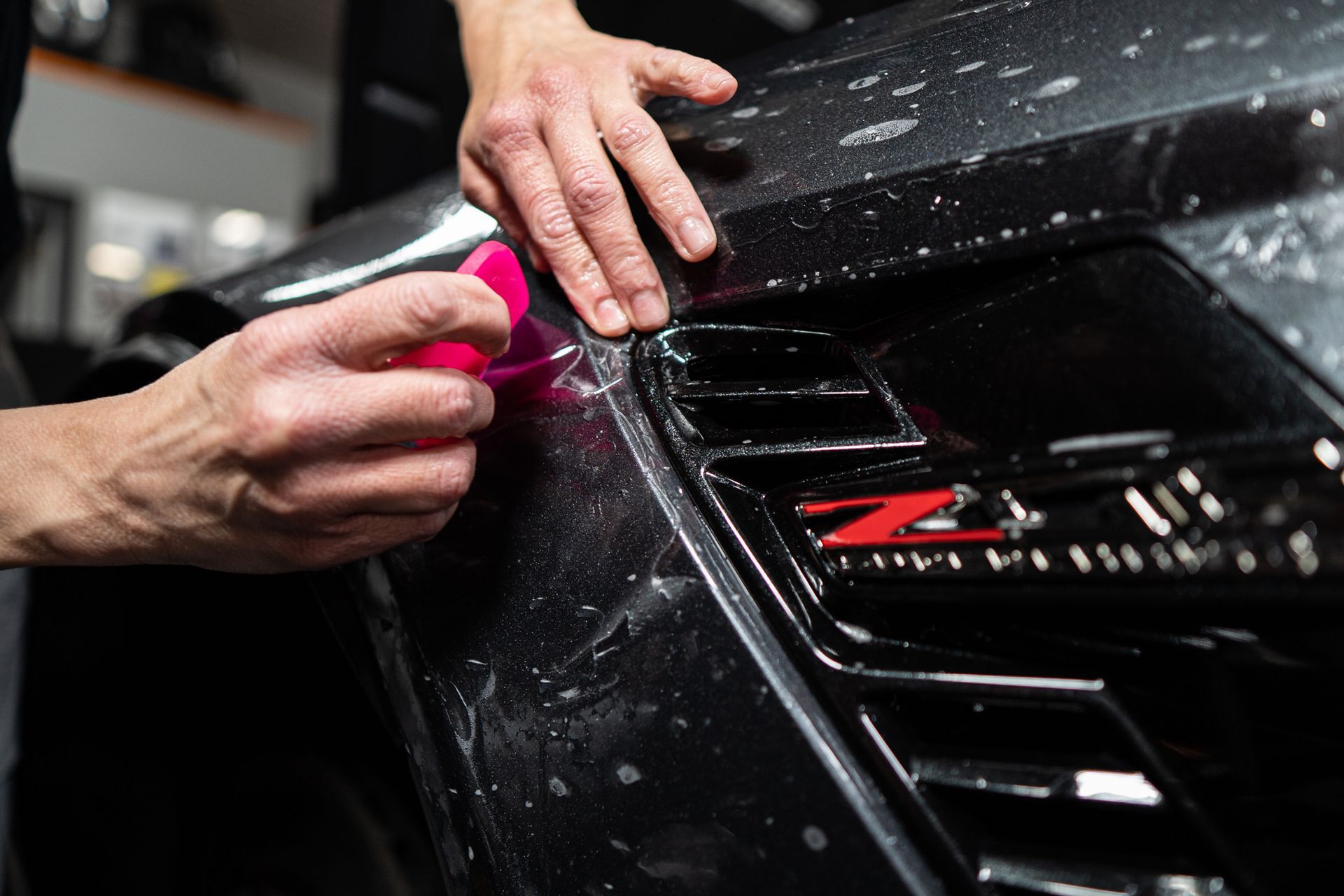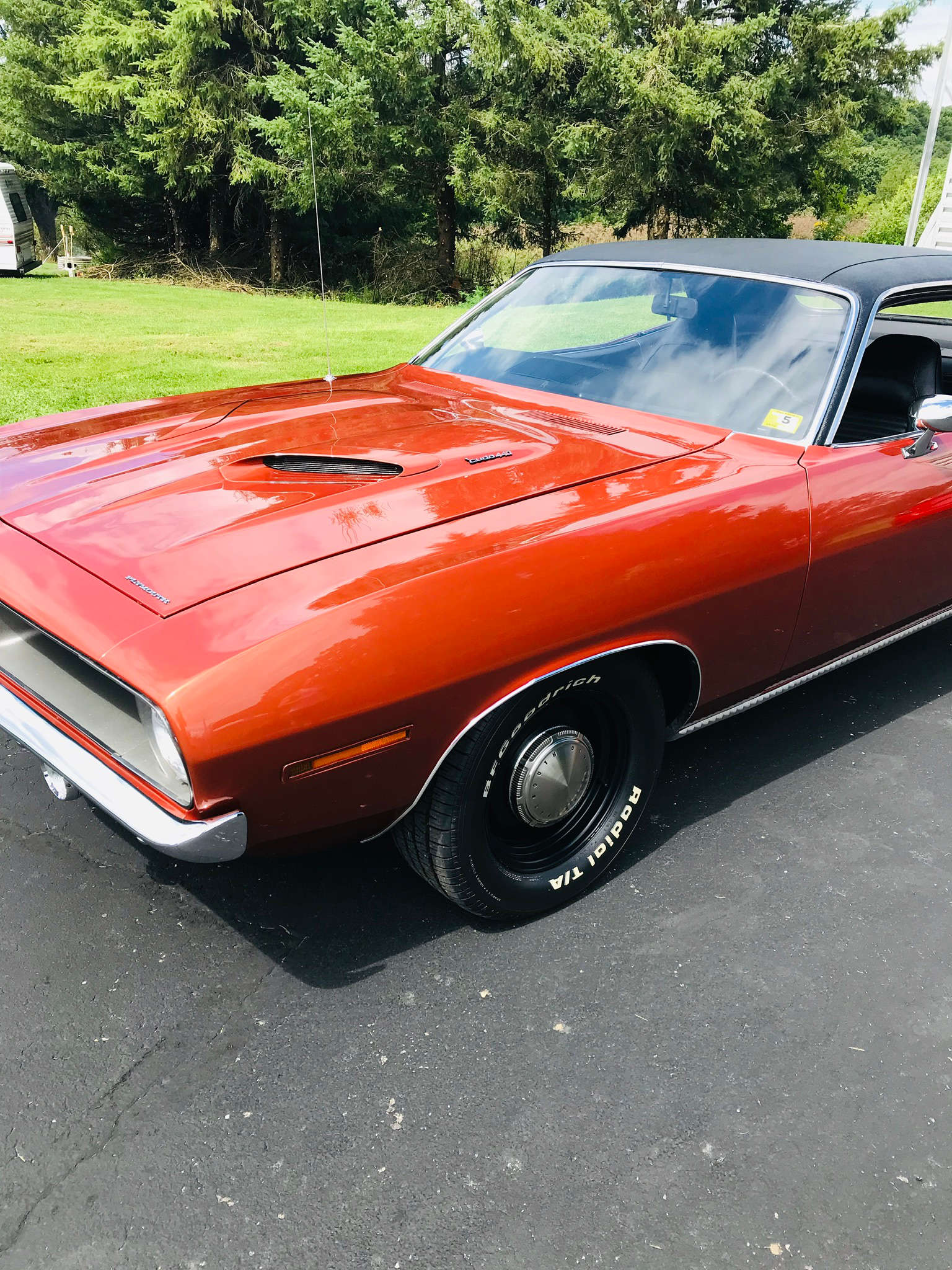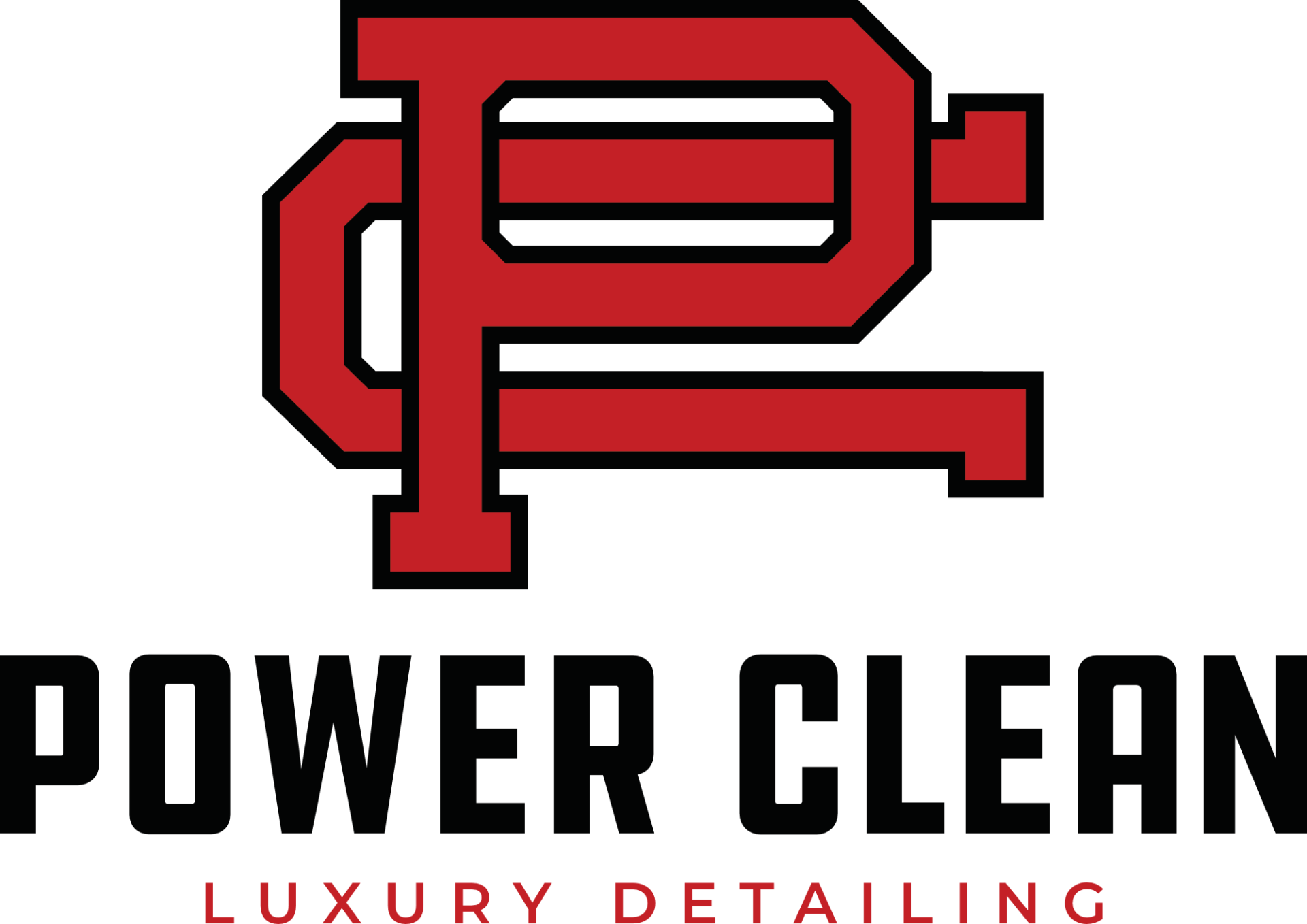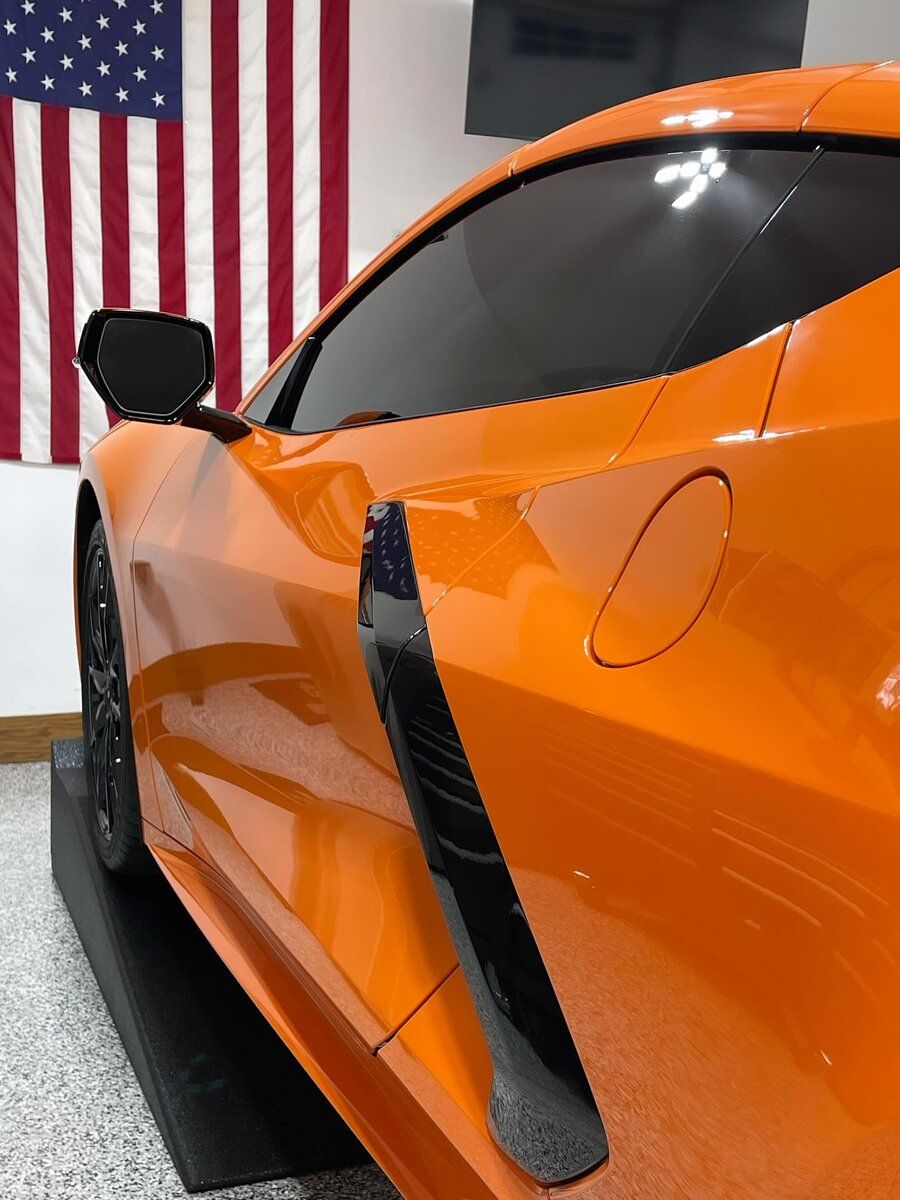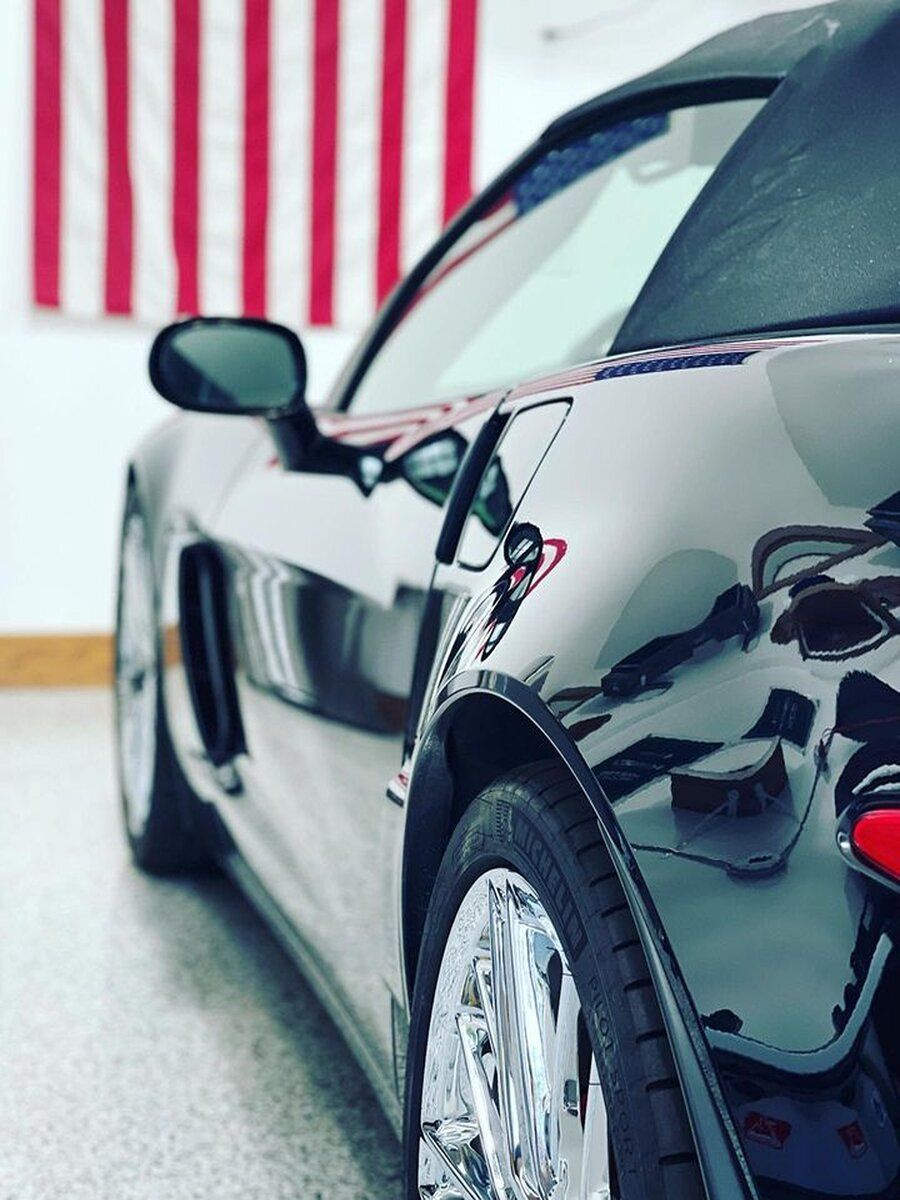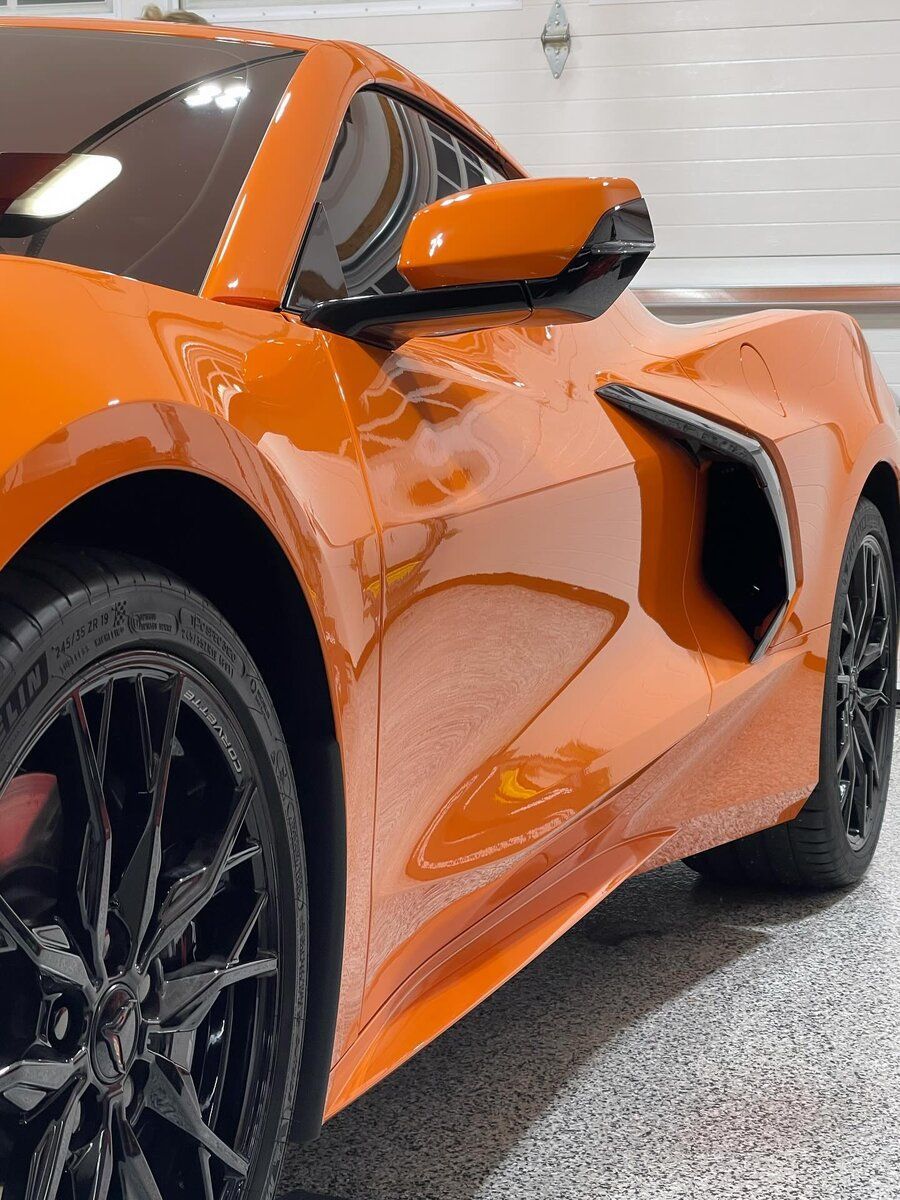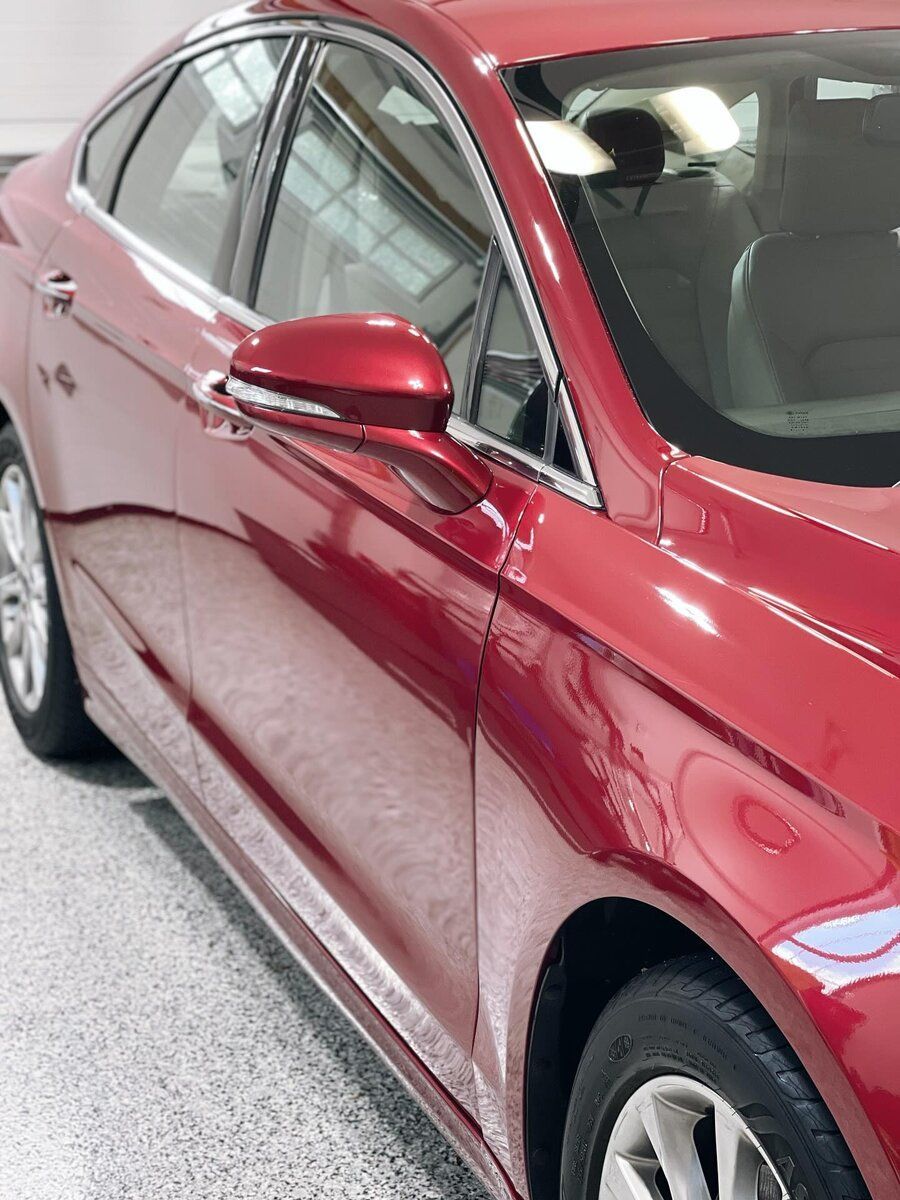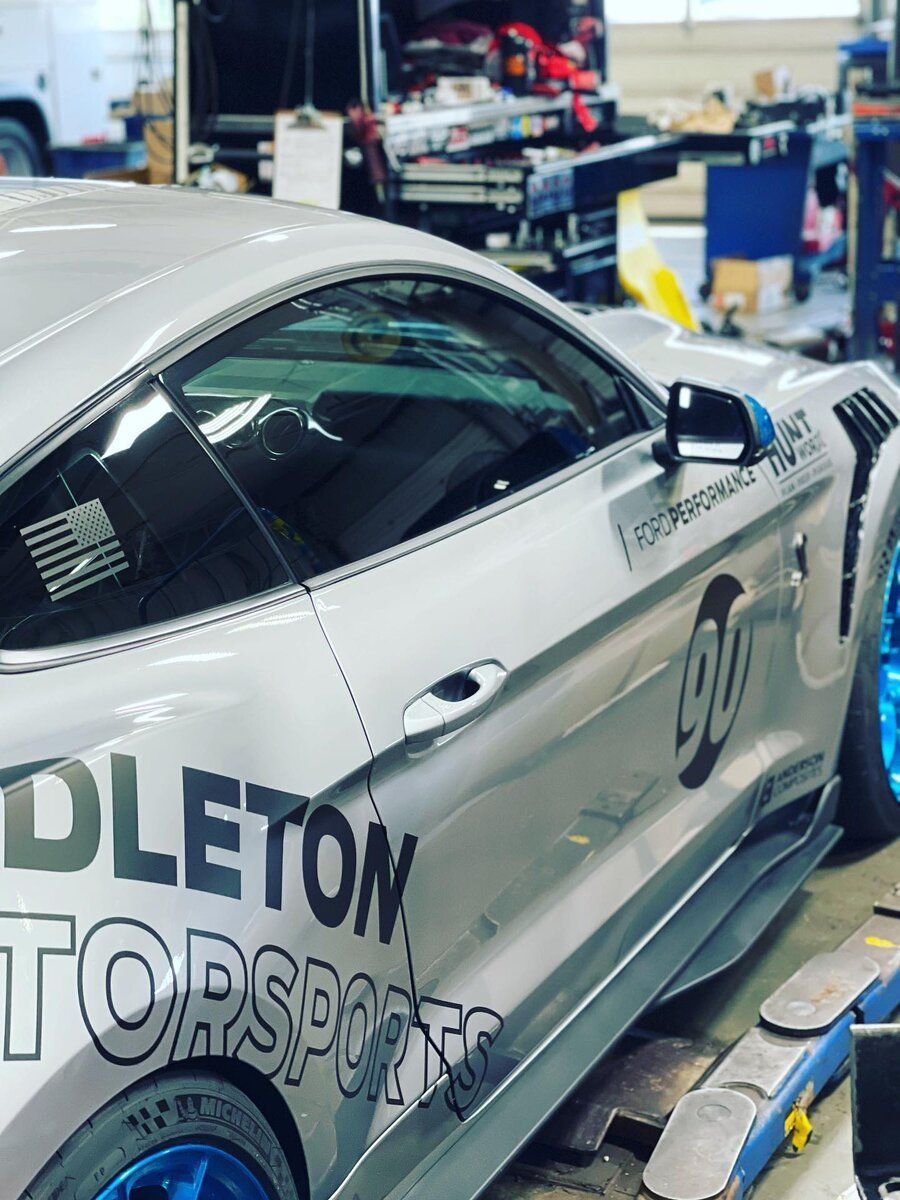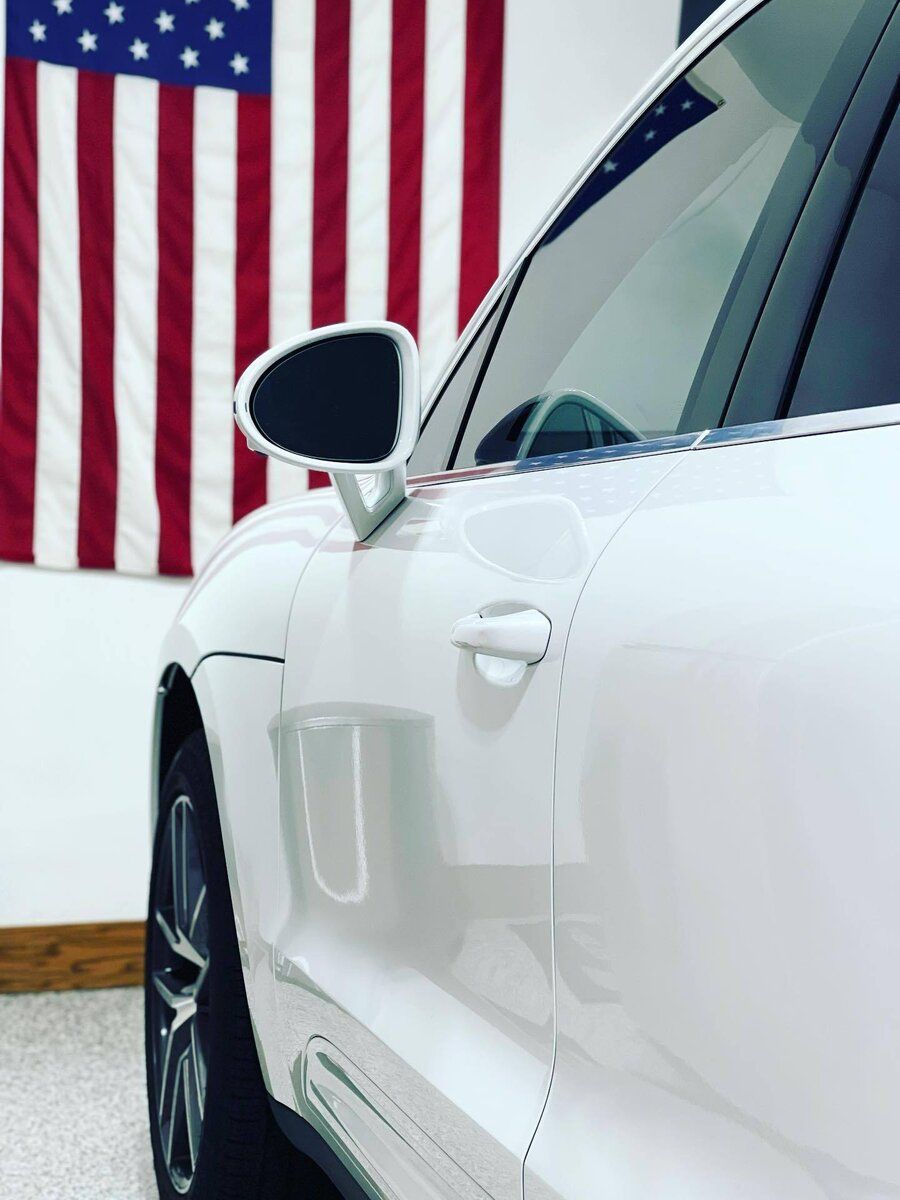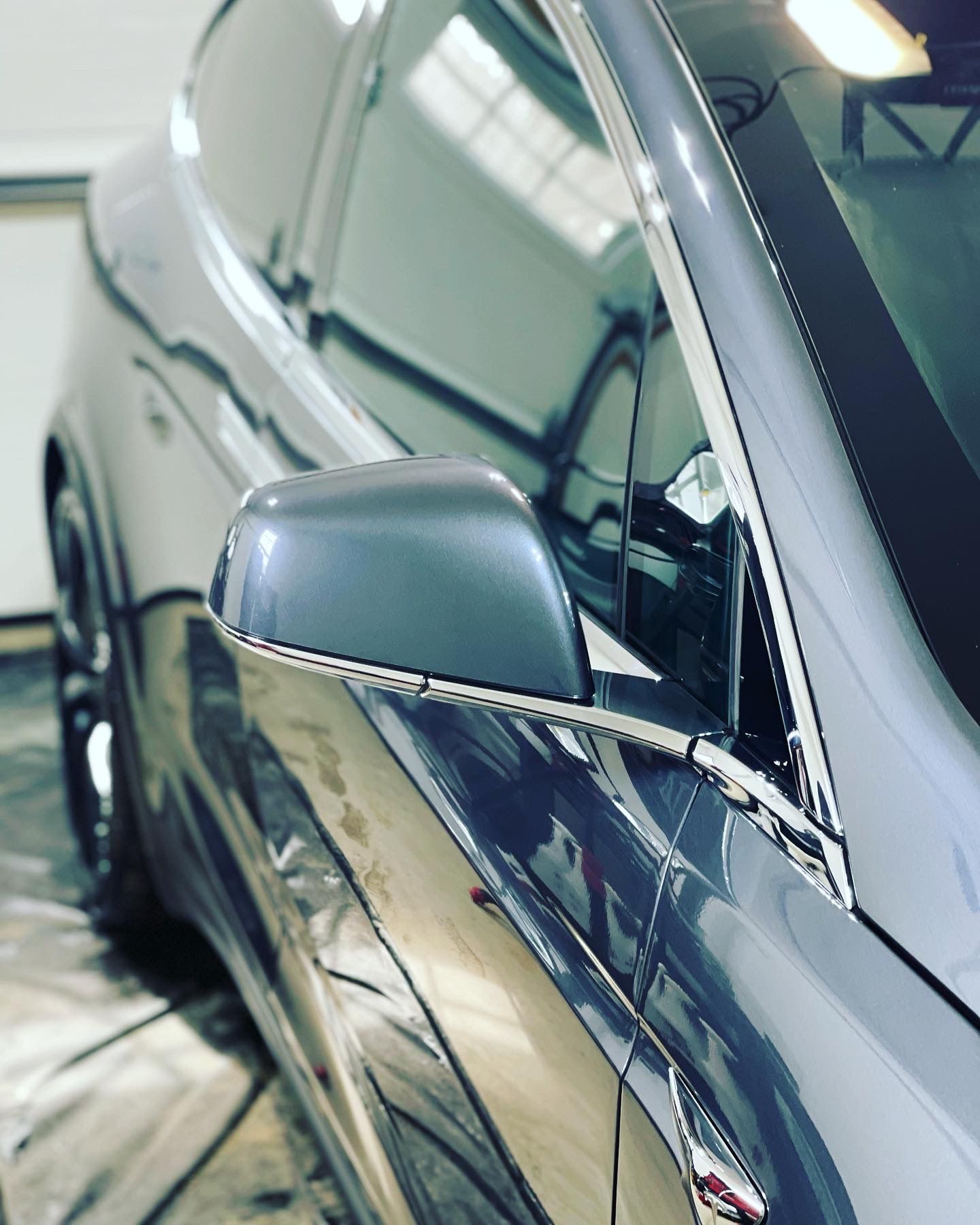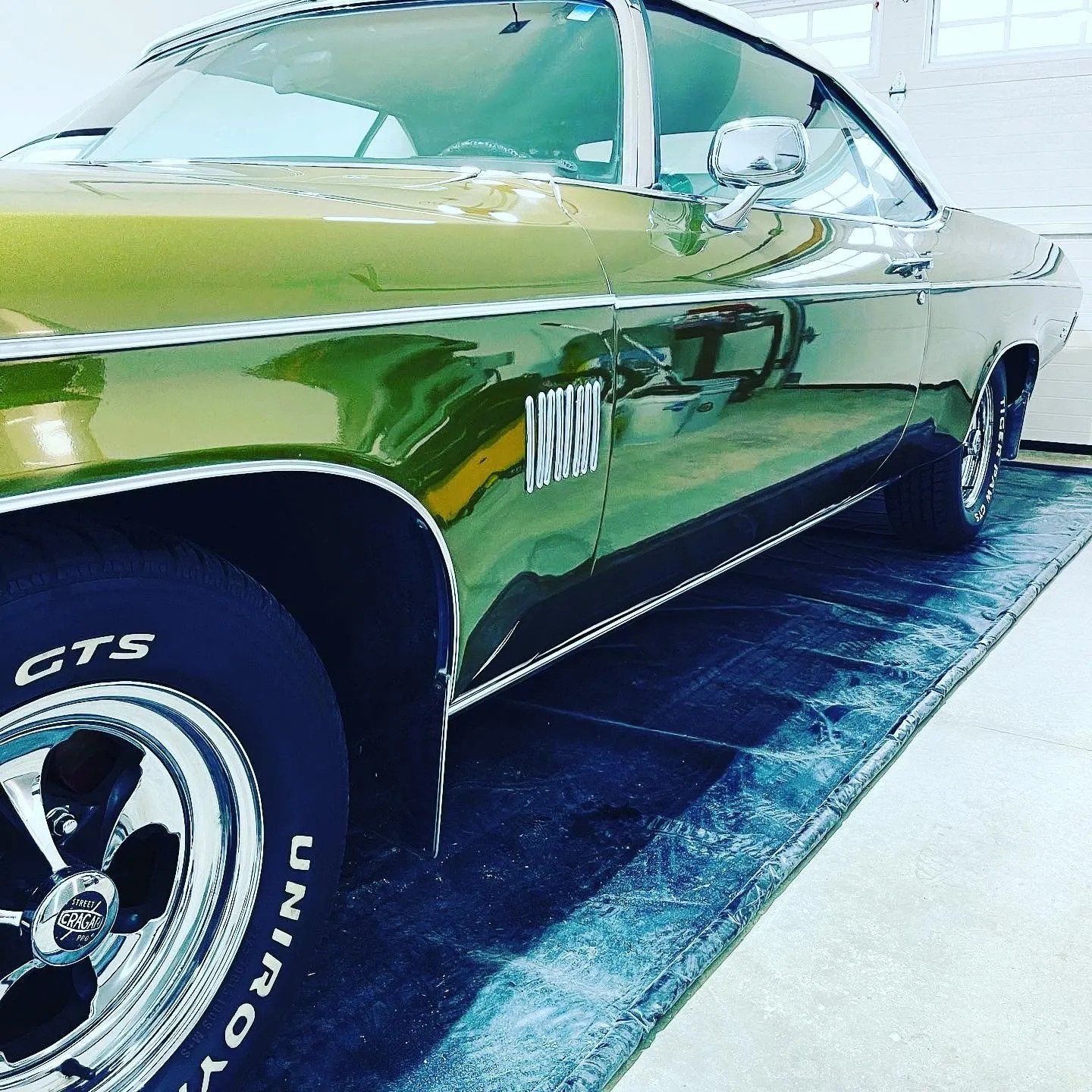Going to the car wash is often a cause for joy; your vehicle is soon to be shining and beautiful! However, car washes are one source of car paint damage that can prevent your car from looking its best. Additionally, natural elements, improper cleaning, and activities like road construction can all affect the color and gloss of a car's paint professionally, resulting in paint damage that can be hard to repair without professional assistance. Fortunately, a professional process known as "paint correction" can help eliminate the headaches associated with car paint damage and restore a vehicle to its former glory.
Paint correction is the process of removing damage from a car's surface, such as fine scratches, stubborn dirt and marks, fading, or oxidation caused by age and environmental damage. It’s primarily used to restore the appearance of damage to both the paintwork and clear coat of cars, but it can also be used to correct minor dents, blemishes, and even rust spots, restoring a car to its original state. Read on to learn more about the causes of car paint damage and how paint correction can help.
Causes of Paint Damage
Day-to-day activities can result in minor to severe direct paint damage. The key causes are improper washing techniques, improper maintenance, and abrasive cleaners that contain harsh chemicals.
Washing your car without proper techniques can cause micromarring due to dirt particles stuck between the wash mitt or sponge and the vehicle's surface, as well as water spots due to dirt and mineral particles in hard water (the latter being more prominent in regions where the water is highly concentrated with several minerals). Regular use of non-pH-balanced soap, sponges, or wash mitts with embedded dirt particles, too much pressure when drying the paint, and not rinsing all the surfaces thoroughly can be detrimental to the vehicle's paintwork.
It is important to note, however, that even when following proper washing steps, there is a chance of incurring some level of indiscernible damage to the paint due to dust and road grime fallout over long periods of time. Additionally, wax and degreasers containing hydrocarbons can be extremely harmful, leading to ingrained contamination within the first few layers of the clear coat (paintwork). Such stubborn contaminants require thorough removals, which are often beyond basic washing procedures.
Therefore, proper maintenance is essential for keeping your car's paintwork in its most pristine condition. It is important to take into account both the washing techniques employed as well as the type of products chosen for cleaning off any grease or other types of buildup on your car's exterior surface. Despite the market's abundance of specialized goods like clay bars, tar removers, and polish, an old vehicle might need careful restoration work by a professional.
In conclusion, neglecting regular care of your car's paint work, along with insufficient knowledge about appropriate washing techniques and an unsuitable choice of products, can lead to heavy damage over time, thus requiring advanced corrective work that goes beyond removing dirt and grime.
Environmental Elements
Environmental elements are the primary source of car paint damage. The sun and its ultra-violet (UV) rays, weathering elements such as wind, sleet, snow, and hail, bird droppings, and airborne pollutants can all cause it. Pollutants from factories and automotive emissions can stain car exteriors, causing discoloration that cannot easily be removed even with a thorough washing. Even leaves from trees can contain compounds that can corrode car paint when left on for extended periods of time.
Heat from the sun is especially damaging to car paint since prolonged exposure generates oxidation, the process whereby particles in the air react to oxygen and render the paint unable to protect itself from other elements. This is why cars parked outdoors or near industrial areas usually suffer more severe paint damage than those kept inside garages or covered parking areas.
For enthusiasts that opt to keep their cars' original factory paint, environmental elements should not be taken lightly. Without active protection measures such as applying wax or sealant regularly, even though car exteriors still look good at first glance, eventually small imperfections in the form of scratches, fading, and chipping will appear over time due to weathering.
Car
paint correction treatments can extend the lifespan of a vehicle's finish by eliminating superficial swirl marks and micro-scratches caused by regular or automated car washes. With special polishing compounds specifically designed for automotive paints, imperfections caused by environmental elements slowly diminish until they are barely noticeable after a few treatment sessions with an experienced technician.
The effects of environmental elements on car paint will vary depending on several factors, such as vehicle color, geographic location, climate conditions, and the presence or lack of regular maintenance steps (e.g., waxes and sealants). Taking these into account can help owners better protect their vehicles’ paint over long periods of time without resorting to costly treatments such as complete repaints or restorations.
In spite of the protective measures to limit the effects of environmental elements on car paint, over time wear and tear is inevitable, regardless of how meticulously one takes care of their vehicle’s exterior finish.
Time
Time is obviously a key factor in the decline of painted conditions. The effects of time on car paint are often underestimated, but they have a significant and lasting impact on the overall look and feel of cars. Over time, the elements can degrade the texture and color of your vehicle's paint. UVA and UVB rays, rain, dirt, and other environmental factors can cause fading, oxidation, discoloration, and more damage.
This issue is especially common with vintage cars, which have seen years of exposure to these elements. The older the paint, the less protection it has against any additional wear over time. Particular locations around the world where temperatures fluctuate or salt is present will also accelerate this process further due to the extra harsh conditions that lead to corrosion, rust, and other negative effects on car paint.
On the other hand, sometimes time has nothing to do with how much damage your car receives. A brand new car can still be susceptible to general wear and tear, scratches from debris, or anything else that comes into contact with it. Poor maintenance or a lack of waxing and polishing can even contribute to damage from everyday activities like parking or driving around town without any extra protection or care for your vehicle's exterior.
It is important to note that the effects of time on paint can be both unavoidable and controllable. With special attention and care, you can slow down the aging process of your car's paint and prevent further damage that may occur as it passes its prime.
Regardless of uncontrollable circumstances like weather, environment, and age, regular attention should be paid to your vehicle's appearance both inside and out, in order to maintain its luster as much as possible. When prevention fails, paint correction technology offers a variety of options for repairing existing aging damage.
In terms of keeping your car in good shape over time, understanding what types of damage your car's paint may face helps immensely when deciding where to focus your efforts on maintaining a reliable paint job.
Types of Paint Damage
Paint damage can come in many different forms, and without regular maintenance, any car will eventually suffer from paint damage to some degree. It is essential to understand the most common types of paint damage when considering the need for paint correction services.
- Swirl marks, which look similar to spider webs or light scratches across the surface of the car’s finish. By vigorously rubbing the surface with an abrasive sponge, improper washing techniques result in swirl marks. This has become even more common thanks to automated car washes that have a tendency to leave swirl marks behind after each wash. Waxes and polishes that contain abrasives can also cause swirling if applied improperly.
- Etching is another type of paint damage that is frequently the result of acid rain and bird droppings. Acid rain essentially eats away at the clearcoat, resulting in permanent etch marks that require proper correction to restore clarity to the paint job. Bird droppings also contain acidic compounds that can eat into the paint upon contact. Once this happens, it can only be corrected with a full restoration process or with complete repainting in order to get rid of these deep etch marks.
- Contamination is another type of paint damage that may reduce the appearance of any automobile. Contamination varies drastically, ranging from water spots (caused by standing water on your car) all the way up to oil residue (which could be sitting on your car’s surface left behind by other vehicles). Cleaning-related contamination may come about from poor care and attention when detailing your car yourself, resulting in ugly streaks and smears on your vehicle that have been left behind from any debris found on the surface of your car's exterior.
Oxidation
Acid rain and air pollution are two examples of environmental factors that frequently cause paint damage by oxidation. When left untreated, oxidation can cause the paint to become dull and fade over time, leaving behind unsightly streaks and patches that are difficult to repair. This type of damage is particularly prominent in dark colors such as black and navy blue.
Some experts believe that oxidation is inevitable and must be accepted as a natural part of car ownership. They advise owners to simply factor in the cost of periodic waxes or sealants into their auto-care budget in order to protect their paint jobs in the long run. Others disagree and suggest that aggressive treatments such as polishing are essential to prevent oxidation from ruining the car's exterior over time. The debate about oxidation may continue indefinitely, but its effects on car paint cannot be denied. Understandably, then, its prevention through regular care can make all the difference when it comes time for paint correction.
Sunlight
Exposure to the sun has a major impact on the condition of auto paint. Prolonged exposure to direct sunlight can cause fading, discoloration, and chalking of painted surfaces. Sunlight contains powerful ultraviolet (UV) rays that have the capacity to oxidize the surface of the paintwork, giving it a dry or rusty appearance. The color of the vehicle will fade while also creating a rough texture and dullness. In addition, prolonged UV radiation can weaken and thin out the clear coat layer of your car, making it more susceptible to further damage from other external factors.
On the other hand, some automotive experts argue that UV rays from the sun can actually help protect and sustain painted surfaces in certain circumstances. This is because ultraviolet light signals the clear coat to harden and thicken, which helps keep dirt and other elements from adhering to your car’s surface. It is also believed that limited exposure to bright sunlight can help neutralize contaminants found on vehicle exterior surfaces.
In any case, whether you believe prolonged exposure to sunlight helps or harms your vehicle’s finish, one thing is for sure: regular application of protective wax or ceramic coating is essential if you want to preserve your car’s paint job for years to come. Machine compounding and polishing are two paint correction techniques that can quickly restore faded and dull surfaces and remove sunlight-induced oxidation.
Therefore, acknowledging the various effects of sun exposure on auto paint is necessary in order to implement preventive maintenance measures to ensure proper protection.
Abrasive Damage
Abrasive damage to car paint is perhaps one of the more common and well-known causes of paint damage, although it is not the only type that occurs. It occurs when harsh chemicals or materials, such as sandpaper, steel wool, and other abrasive objects, are used to scrub a car's surface, causing the paint to deteriorate. Though someone might think they are making their vehicle look clean by using abrasive chemicals or materials on its surface, they could actually be doing more harm than good and speeding up the process of eventual paint damage.
On the one hand, some people may argue that light abrasive damage is necessary to ensure a deep cleaning of your car's exterior. By using something like steel wool or an abrasive cleaning tool to scrub away dirt, residue, and grime, they believe they are thoroughly buffing and polishing their car's surface. However, this type of aggression is likely to cause small scratches, which can eventually lead to rust penetration if left unmanaged.
On the other hand, some also believe that a mild mechanical cleaning (such as with a clay bar) is acceptable for removing certain particles from the car's surface, but again, there could be residual scratching left after use. Depending on how hard you press into the surface with these tools, you could remove layers of paint in the process, resulting in cloudy patches and micro-scratches that need correcting. It’s best practice to avoid these tools altogether, especially when hand-cleaning one’s vehicle.
In conclusion, abrasive damage should be managed carefully in order to prevent any lasting damage from being done to your car's paint job. Although some people may think that using abrasive cleaning tools or materials is necessary for keeping their cars looking clean, they may not realize that overuse can cause long-term consequences in the form of wear and tear on the vehicle's bodywork. Thankfully, though, once identified, most abrasion problems can usually be addressed through paint correction techniques such as wet sanding, buffing, or polishing.
Fixing Paint Damage
Fixing paint damage can vary depending on the severity. If the damage is mild, car owners may be able to use DIY products such as rubbing compounds and waxes to reduce or remove visible scratches and scuffs. The downside of this approach is that small details, like wiping motion streaks, may remain and will likely require advanced detailing techniques from a third-party specialist.
On the other hand, more severe damage, such as peeling of a clear coat or oxidation, may require professional restoration services for complete resolution. These services usually involve sanding down the affected areas with specialized tools and machines and applying a couple of coats of paint in order to recover the original look of your car’s finish.
Professional resurfacing treatments might sound intimidating at first because they are more expensive than conventional DIY methods. However, in most cases, they provide significant benefits that make them well worth the expense: they enable the car paint to look factory new again; they last longer and save the user both time and money in costly remodeling treatments; and finally, they protect the mechanics underneath our car’s exterior, which ensures its longevity in the long run.
Car paint corrections
Car paint corrections are a process that is used to restore the aesthetic appeal of vehicle exterior paint. This process, also known as "paint polishing," involves the use of specialized compounds and polishing pads to buff out existing imperfections such as light scratches and swirl marks. When done correctly, car paint correction can help restore the original luster and condition of a vehicle's paint job while also preserving its longevity and shine.
On the one hand, some argue that car paint corrections are unnecessary and a waste of time and money, considering they're going to require maintenance again at some point in the near future. Furthermore, there are those who think repairing minor scuffs and scratches without professional help is sufficient, since most people won’t be able to tell the difference between a professionally detailed vehicle and one that has been machine polished by an untrained eye.
On the other hand, proponents of car paint corrections will put forth the idea that this service can actually save money in the long run due to its ability to prevent further damage from occurring down the road. Paint correction also yields much better results than performing repairs at home and offers an overall better finish. By reducing seemingly small blemishes now, you’ll save big bucks later on if you ever decide to sell your car or bring it in for a trade-in appraisal.
In conclusion, car paint corrections are both cost-effective and beneficial for restoring a vehicle's original luster and condition. While there is an initial investment involved with this type of service, it pays dividends in terms of keeping your car looking new for longer periods of time as well as having greater resale value when it comes time to sell or trade it in.
Benefits of Paint Corrections
Having paint corrections done to your vehicle can take it from looking aged and damaged to one that looks immaculate and brand new. The process starts with paint correction professionals carefully polishing the damaged or aged areas of the paint, restoring them to their natural state. This process includes rounding out any deeper scratches and using a variety of glazes or waxes to bring back the lost gloss in your vehicle's paintwork. You will no longer have scuffs, swirl marks, oxidation, or water spots on your vehicle's body.
Beyond the visual aspect of the job, paint correction can also serve as a preventive measure against future damage. After the process is complete, your vehicle’s paint will be more protected with layers of fresh wax and sealant applied during the final stages of a paint correction service. Since these layers act as coatings for your car and protect it from dirt and debris that cause damage, you won’t need to head back to the shop every few months or years to get your car corrected again.
Although some critics argue that getting a paint correction done should not be necessary as long as people care properly for their cars, most people still benefit from it in order to improve their cars’ aesthetics and preserve their value over time. For those with older cars who would like an improved look without spending money on getting an entirely new coat of paint done, getting a paint correction is indeed an ideal solution.
Solutions to Prevent Car Paint Damage
When it comes to car paint damage, prevention is key. There are a variety of solutions that can help protect cars from imperfections and safeguard their exterior surfaces. Taking the time to take precautionary measures will save car owners time and money in the long run, as repairs will become more costly and often more difficult as time goes on.
For starters, routine washing is an important preventative measure for cars. Regular washing is beneficial as it helps remove dirt, debris, and other contaminants from the surface of a car. Interior and exterior cleaning with gentle cleaners is also recommended. Care should be taken to avoid abrasive or harsh cleaning chemicals, as these could damage painted surfaces.
Touchless car washes can provide protection from scratches on a car’s surface; however, this option has two sides to the debate. On the one hand, they offer convenience and may get rid of large amounts of dirt quickly. However, the potentially harmful chemicals used in touchless car washes might make some opt for manual car washing services instead.
Another way to help keep a car looking nice is by waxing it regularly. Wax provides an additional protective layer between the elements and the paint on your car's surface, which can help extend its life expectancy while also providing aesthetic appeal.
Parking in well-sheltered areas can also help reduce the chances of encountering damaging elements such as bird droppings or fallen branches that may cause harm to a vehicle’s paint job. Explore different avenues for parking options, whether it means securing garage space or paying for nearby covered spots. It can lead to fewer occasions where weather events (hail storms) or flying debris from construction areas are factors that could put a vehicle at risk for paint damage.
Finally, regular inspection of a vehicle's exterior is recommended to spot any small scratches that have become prevalent over time but don't always easily draw attention from those who simply glance at their vehicles daily. Quickly tending to small nicks before they turn into bigger problems is one way of preserving one’s car investment over the long term.
The aforementioned solutions are only some preventative measures when it comes to protecting one’s vehicle against unexpected damage or deteriorating features over time. With a few proactive steps, one’s car's exterior can remain pristine and keep its overall value intact while being prepared for unexpected situations that may arise along the road ahead.
Contact Power Clean Luxury Detailing for paint correction services.
Experience the difference of a truly flawless finish with Power Clean Luxury Detailing's paint correction services. From removing swirl marks to restoring your vehicle's showroom shine, our expert team uses the latest techniques and technology to transform your paintwork. Don't settle for anything less than perfection; schedule your paint correction service today and discover the Power Clean difference!
Share with your Friends
